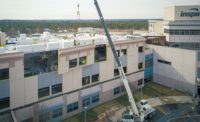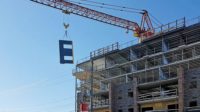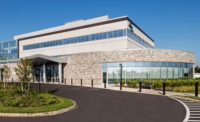From the moment an architect’s pen hits the sketch pad for any construction project, a complex equation begins to take shape to balance performance and aesthetics, pragmatism, and artistry. Once decision makers settle on a look, they then need to make key decisions on the different components of the exterior wall assembly based on the desired performance of the building.
As with all facets of a construction project, time and money are key drivers as stakeholders begin to make choices about the products to be used on the building façade. How can project managers deliver on aggressive time schedules, minimize costs when it comes to installation, and still ensure the project achieves the desired results? Put another way, how will the building deliver on aesthetics while also protecting its occupants and making them safe, comfortable and secure over the long haul?
One approach is to look at each one of these requirements separately and, in turn, find a separate product to deliver on each front for the façade. If the design features brick and stucco, this approach would require multiple suppliers, multiple wall systems, and multiple trades to install each material. The various crews would have additional work to detail the transitions between cladding types to ensure there were no opportunities for air leaks and moisture intrusion.
Another approach is to integrate these requirements in a prefabricated single system with a continuous layer of air and water-resistive barrier that removes complexity from the equation and streamlines the process for contractors and installers who will take what is on paper and build it. With a water-resistive barrier and continuous insulation, the top layer of cladding can be most any aesthetic desired or a combination of aesthetics without the concern of air and water leakage or the need for multiple trades and suppliers.
Upon closer examination, prefabricated exterior wall solutions solve a host of challenges faced by nearly every construction project. The individual layers in a prefabricated wall panel work in concert with each other to deliver a holistic approach in a single component. At the same time, designers can stretch their imagination, and all construction stakeholders can reap the benefits of time savings.
Peeling Back the Layers
A building’s façade is constantly bombarded by the forces of Mother Nature—rain, wind, snow, UV rays, temperature changes and more. The building enclosure’s durability is dependent on having effective components in place, which is why it is necessary to ensure a protective barrier with control layers. These layers interact to both protect the building from the exterior elements and create a comfortable interior for its occupants. They include:
A vapor control layer that is permeable or impermeable per the designer specifications to minimize condensation by controlling the flow of water vapor as it shifts from high- to low-pressure areas.
- An air control layer that reduces energy and condensation loss by limiting the uncontrolled flow of air through the wall assembly.
- A water penetration control layer that prevents water from entering the wall cavity and is flashed to the cladding’s exterior.
- A thermal control layer to mitigate energy loss and prevent thermal bridging.
- A durable, water-shedding layer to protect against environmental elements, impacts, UV exposure, pollutants, and more.
Smartly engineered building enclosure systems contain all these control layer components in an integrated, tested system. This kind of methodology can solve a host of challenges on a construction project, whether it is a company’s new headquarters or a high-end condominium designed specifically for people seeking an urban living environment.
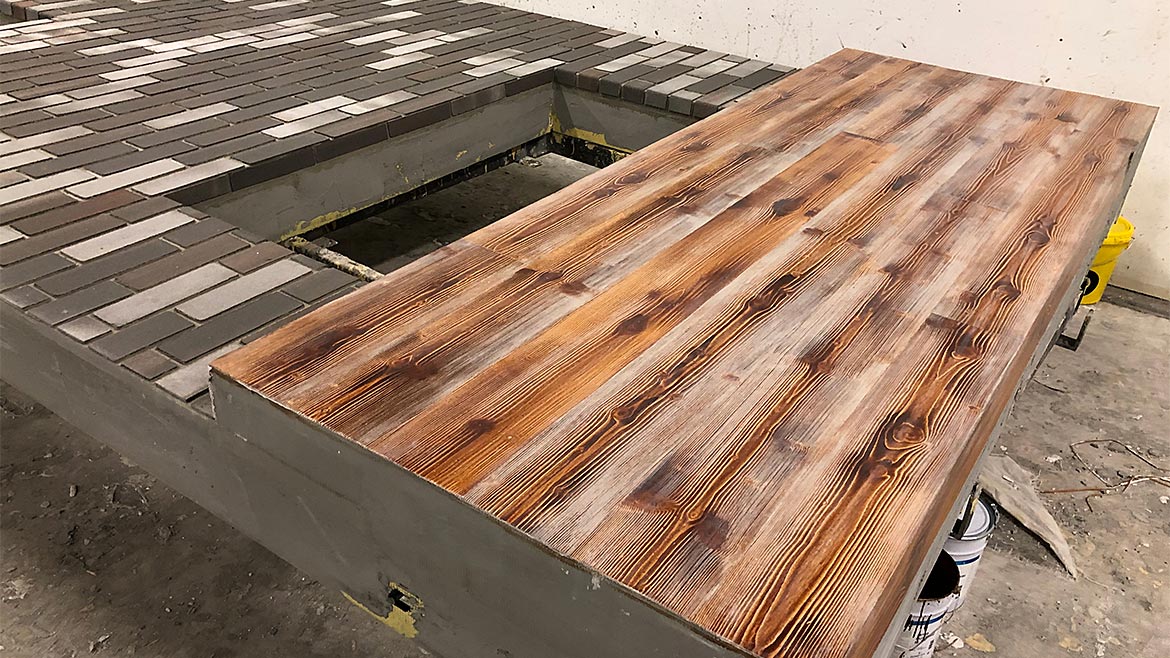
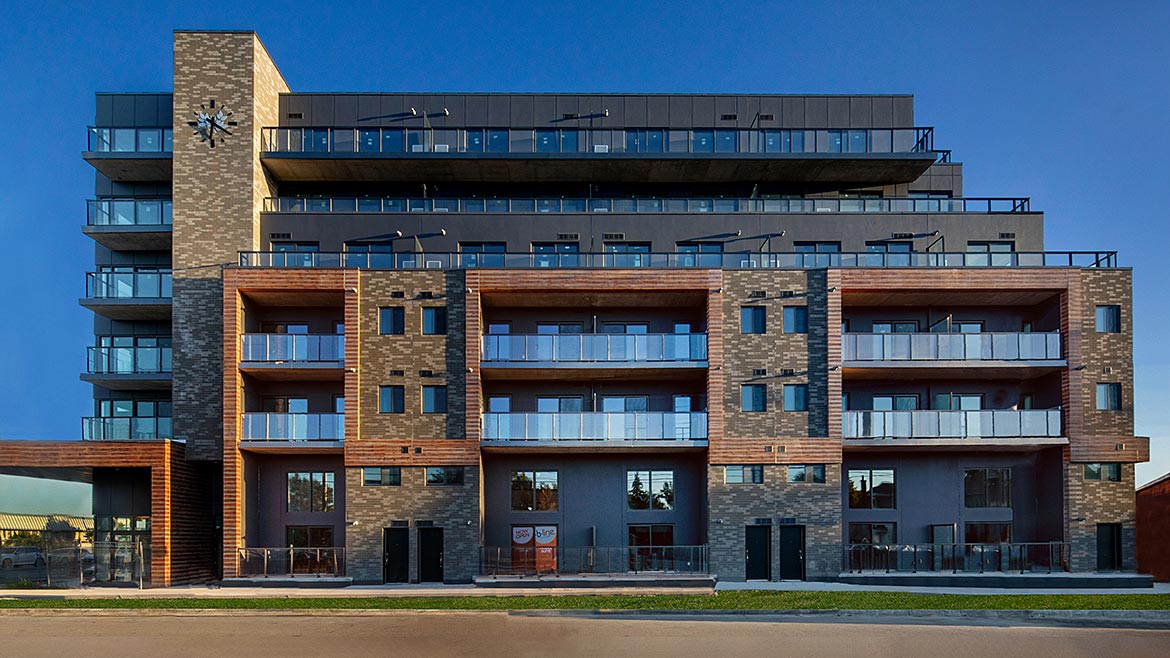
An Uncompromising Vision
Situated just west of downtown Toronto, B-Line Condos are built to impress. Ideal for residents seeking luxury living in an urban setting, they are near two major highways and close to public transportation,
During the design phase, the developer for B-Line Condos expressed three challenges to consider:
- The building must include continuous insulation for its residences to accommodate for Toronto’s harsh winters.
- The condos must boast a complex, modern, sophisticated design with multiple finishes for the exterior wall.
- The job site was very tight and had very little room for scaffolding or material storage, making on-site construction of the building’s façade nearly impossible.
The solution: panelization using tested, proven, warranted wall panels that are fabricated in a controlled factory environment and delivered to a job site for installation.
Marco De Simone of Royalpark Homes, the developer on the project, had reservations about whether mega panels produced offsite in a factory environment could deliver on his design vision for the façade. Skyrise Prefab, a panel manufacturer, arranged a tour of buildings in Europe that utilized the solution, convincing De Simone that the panels could create the modern look he sought.
The solution: Elaborate, prefabricated wall assemblies using lightweight panels that are both energy efficient and durable. The panels include continuous insulation, a waterproof air barrier, and a ventilation cavity.
The design of the condominium complex called for three finishes for the external cladding: metal, brick and wood.
To achieve the look of brick and wood, the project team selected resin-cast brick and wood to integrate with custom finishes. Resin-cast brick achieves the classic brick look with custom-made, resin-cast bricks that are lightweight, flexible, easy to apply, and durable. Resin-cast wood is comprised of lightweight, flexible, resin-cast wood grain planks that deliver an authentic wood appearance, making them a durable, low-maintenance alternative to natural or engineered wood cladding.
The result was a multi-faceted building façade for B-Line Condos, one that solved a host of challenges concerning energy efficiency and aesthetics. Prefabrication drove a more aggressive completion timeline. Project leaders estimate that what would have taken a year to create the exterior facade was instead completed in two months.
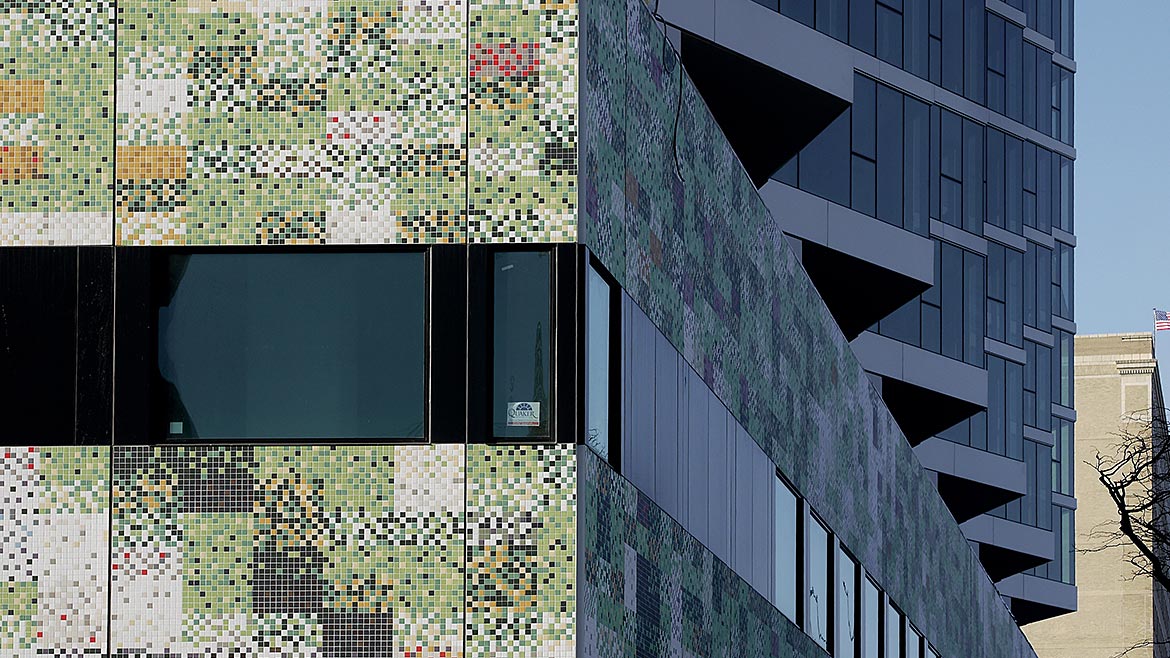
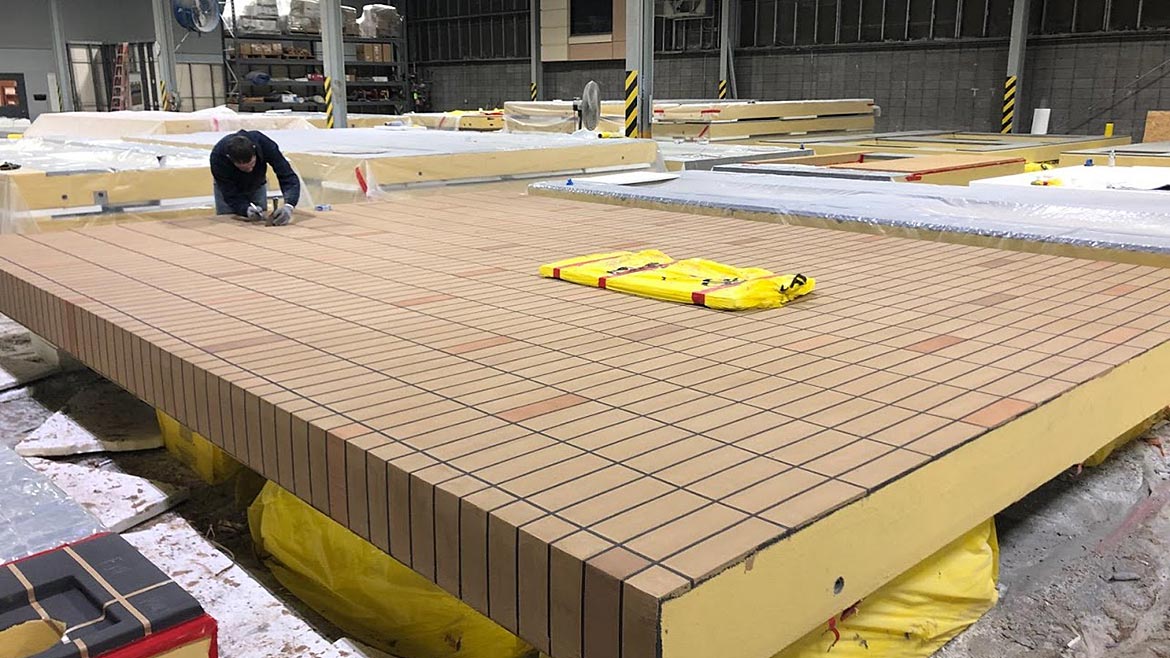
Prefab Solution for Upscale Student Housing
Hub State Street, just steps from the campus of Purdue University, is an upscale apartment complex for university students that offers a broad array of amenities. During planning and construction for the project, architects and construction crews faced an aggressive schedule and a host of challenges that made prefabrication the optimal solution for the building’s façade.
The construction site for The Hub had a small footprint in a dense urban area with active city streets on two sides, leaving little room for a laydown area for material storage or scaffolding. From an installation standpoint, each individual apartment required multiple penetrations in terms of the building’s external cladding. Moreover, crews were working on a strict deadline to complete the project since students renting apartments in the building had been given specific move-in dates.
Antunovich Associates, the architect on the project, promoted the use of prefabrication as the preferred approach for the building’s exterior cladding. They specified a prefabricated exterior wall cladding system with a brick and metal look, delivering a modern, sophisticated facade.
Working in partnership, Grayhawk LLC and Great Lakes Prefab designed, fabricated and waterproofed 430 external panels in a controlled manufacturing facility to provide for the highest-quality building envelope. A small crew then installed all the panels using one central tower crane, collapsing the time frame for completion and minimizing disruption on the busy college campus. Rather than six to eight months to complete the job, it took 68 days to install the prefabricated solution.
Prefabrication created a platform for efficiency and higher-quality output, reducing project risk without compromising on façade aesthetics. The combined solutions resulted in an integrated, lighter-weight external cladding system versus traditional brick and metal. Moreover, complex transitions between the brick and metal façade aesthetics were eliminated since the project used the same system within the exterior panels.
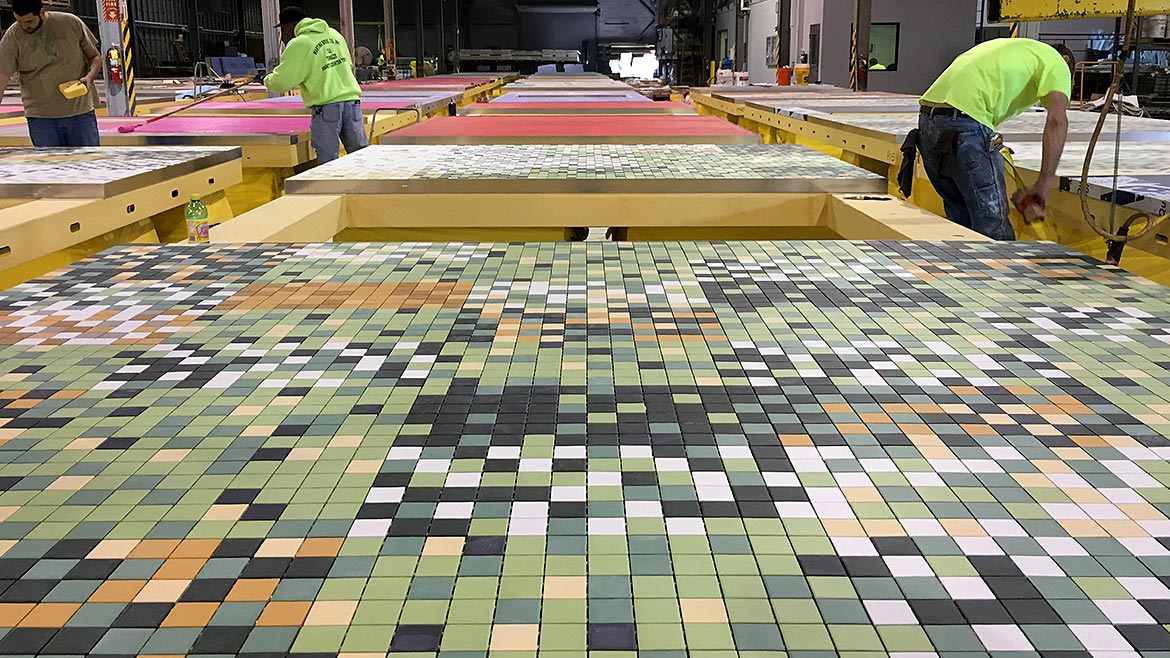
Sophisticated Details for Retail
In the Hyde Park neighborhood of Chicago, architects from Studio Gang relied on a prefabricated exterior wall panel system to turn the two-story retail base of the new City Hyde Park residential tower into a colorful, intricate tile mosaic depicting the four seasons of the year. The design included punched windows made to appear as though they were ribbon windows and multiple textures that included metal and tile.
To achieve the four-season mosaic design intent, Studio Gang and Grayhawk collaborated to design a solution using backup panels with the tile installed over cement board sheathing. In total, the team crafted 44 custom tile mats, each with a unique color composition created from two-inch tiles. In addition, metal panels were used between the punched windows to achieve the desired illusion of ribbon windows.
All the panels were prefabricated at a facility in Lexington, Ky., and shipped to the jobsite in Chicago. At the job site, a small team installed the panels in a compressed period, accelerating the completion of the building’s façade compared to a traditional, on-site approach.
Creativity Takes Shape
Engineered building enclosure systems deliver unparalleled design freedom. Architects and designers can stretch their imagination, incorporating a wide range of performative aesthetics.
Then there is the high level of confidence to all participants in the value chain when it comes to long-term performance. A prefabricated system provides for an easier installation, easier transitions, and fewer variables by using a fully integrated, tested, and warranted solution from one manufacturer, all delivered to the jobsite and ready for installation.
Reducing the trades and suppliers involved in a project reduces complexity and improves project coordination. For mega wall installers, utilizing a prefabricated solution with a continuous air and moisture barrier along with continuous insulation means one crew installs the entire project, regardless of the top layer aesthetic of the cladding.
An opportunity for one construction crew to secure a larger piece of business on a project, accelerated timelines for installation and cost predictability translate into a better bottom line for everyone involved.
Creativity begins in the mind of the architect and the designer. Solutions powered by prefabrication bring that vision to life with certainty and reliability.



